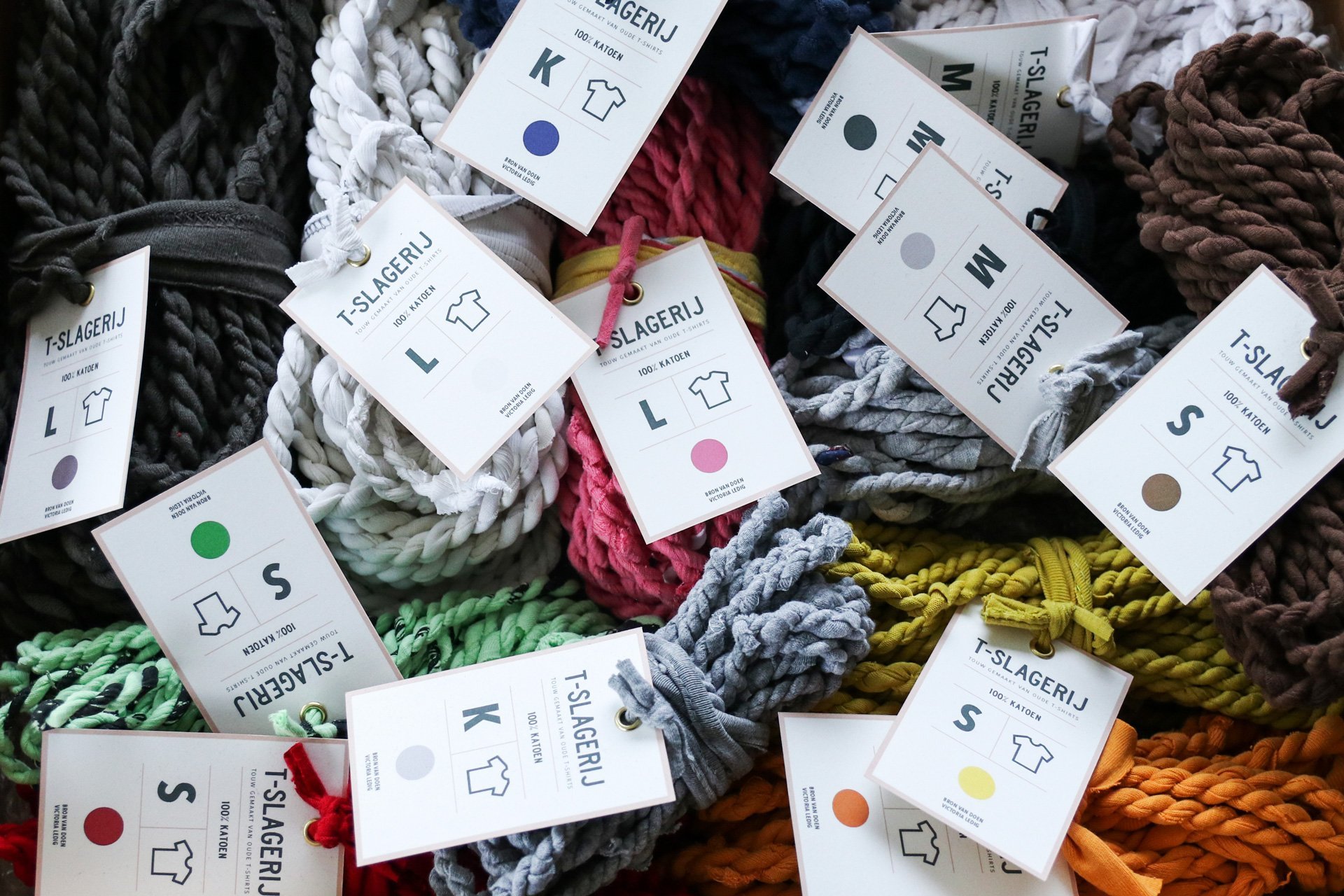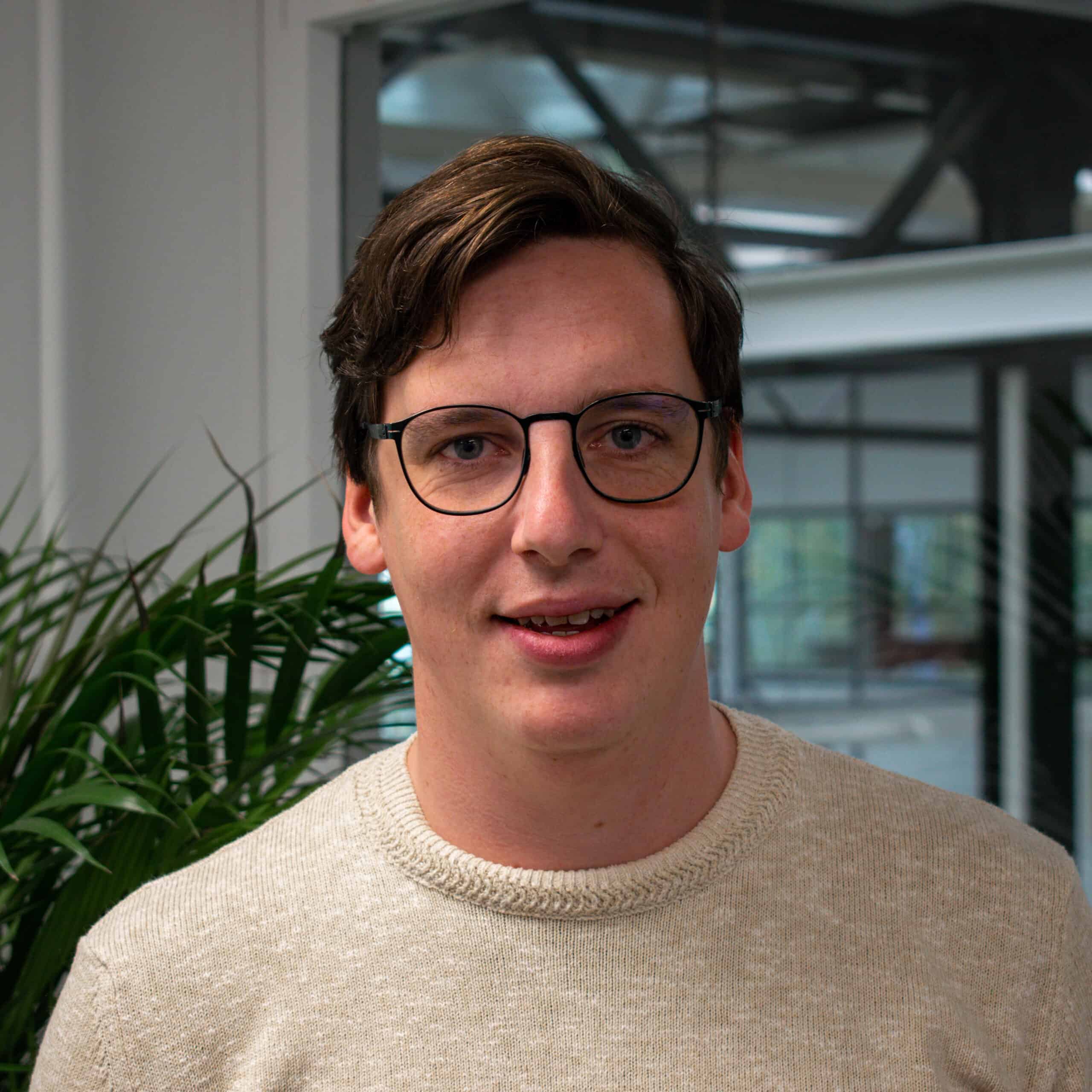
The Dutch Design Week in Eindhoven is the largest design festival in Northern Europe. Every year we pick nine designers that we think are this year’s hidden gems. You can read their stories here. Today: Minsung Wang about Bron van Doen and Social Design.
The design studio Bron van Doen specialises in Social Design. In the past, they have worked together with refugees, expats, pensioners and people with mental and barriers to employment in their social workspaces. This year at the Dutch Design Week, they present a new project; T-Slagerij.
Bron van Doen uses old T-Shirts to make rope. “All over the city, there are second-hand clothing stores and non-profits that collect old clothes. But even there, they are throwing away a lot. That is because they don’t have enough manpower to search through all of it and because there aren’t enough people that buy used clothes. So the material we use is really at the end of its lifecycle. It will go to the dump or is used as a cheap industrial filler. And the most common products that were thrown away were old T-Shirts”, says Minsung Wang, Co-Founder of Bron van Doen.
 With techniques that have existed for centuries, rope making is an old and relatively simple tradition. “We named our exposition after the touwslager”, an almost extinct occupation. From a single old t-shirt, Bron van Doen can make 15 to 20 meters of rope. Wang describes the process as “somewhere in between studio craft and industrial production.” The fact that they make use of a social workspace, does not mean the materials are being made unprofessionally. “It really is our job to make good quality products.” In the exposition, Bron van Doen shows a couple of different products you could make from the rope, including a chair made in collaboration with Uit de Buurtfabriek, an older project of the design studio.
With techniques that have existed for centuries, rope making is an old and relatively simple tradition. “We named our exposition after the touwslager”, an almost extinct occupation. From a single old t-shirt, Bron van Doen can make 15 to 20 meters of rope. Wang describes the process as “somewhere in between studio craft and industrial production.” The fact that they make use of a social workspace, does not mean the materials are being made unprofessionally. “It really is our job to make good quality products.” In the exposition, Bron van Doen shows a couple of different products you could make from the rope, including a chair made in collaboration with Uit de Buurtfabriek, an older project of the design studio.
Although you could say that T-Slagerij is a project that focuses on circularity and recycling, Wang doesn’t see it that way: “Our focus is the social aspect of design. What we show here is the material study we did this year and also our test we did with people in the city. Like workshops, for example, to see how much people can learn and if people are interested in this material. The test is to see if the material is interesting for potential clients; do they want to develop products with this material, or do they want us to do that? The social-economic aspect of this project is taking that into the city to groups we are already working with and to the inhabitants, and train them to learn the craft of ropemaking, and do the assignments while earning some money. And as we do in Uit de Buurtfabriek, put them in a social workspace to help them grow and develop where ever they are in their life.” In other words, the objective of this exposition is to show the world not only that you can make new products and materials of things that people throw away, but also: “How refined and skilled we can be in a social workspace.”
That social factor in design is something Bron van Doen likes to do, but it comes with its challenges. “Social projects are not how you earn money”, says Wang. “We earn money with other projects, so we can do what we are passionate about; social Design.” And if you work with people that have difficulties entering the job market, you have to train them and guide them to reach their potential. For that purpose, Bron van Doen works with a couple of different social organisations that do have that expertise. “Ron and I are designers, and we are not pretending to be experts in all these social aspects. That is why these people have a coach and mentor.”
Location: Yksi
The DDW Hidden Gems are published in collaboration with Dutch Design Daily and curator Katja Lucas of DDW. Would you like to visit the hidden gems yourself? Every day Brandstore Eindhoven/VVV organises a bike tour to the selected designers. For more info check the website or use this link to book a ticket.
Special offer for IO readers: the first 25 people receive a 10 euro discount on their ticket. Use the action code ‘Gems18’.


